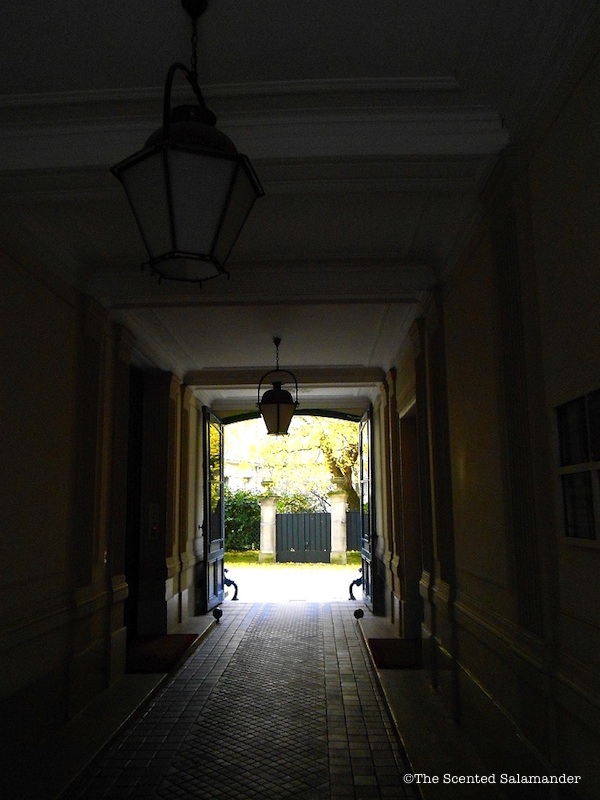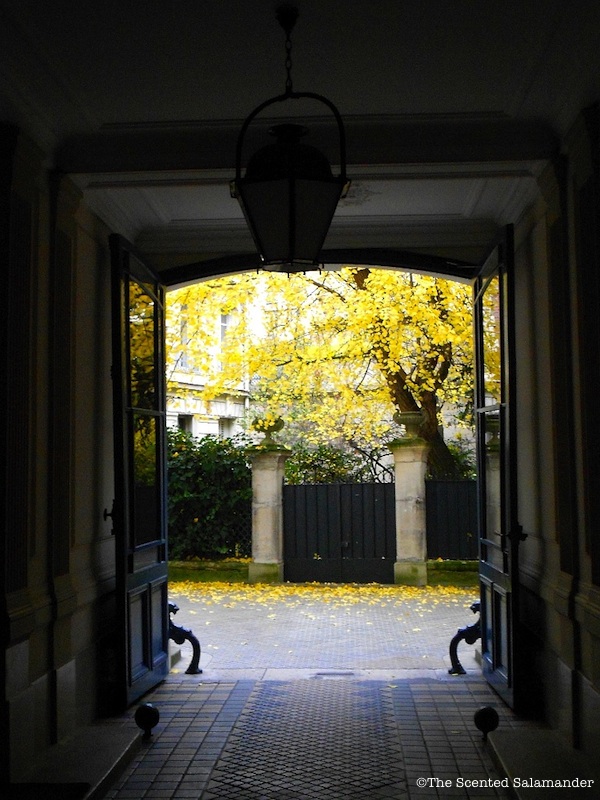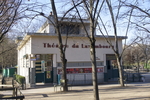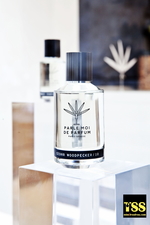A Ginkgo Biloba Tree in Paris {Scented Paths & Fragrant Addresses}

The other day as I was walking past a porte cochère (gate) in Paris, I must have been attracted by the golden aura that softly radiated from within an inner courtyard, spilling into a long, dark corridor separating a discreet garden from a busy street...
At any rate, something beautiful caught my attention, and I stepped into the corridor. I realized then that it is a garden that I keep noticing from afar and once even took pictures of in winter, under the snow. The perspective that uncovers it is particularly harmonious and charming.
Two weeks ago maybe, it was still fall time. Now it feels more like the dead of winter is pre-announcing itself. As I write this down, the pale, luminous golds might have faded already.

As I got closer to the source of light, the foamy, light golden nuances, I started reacognizing characteristic shapes, the fan-shaped leaves of a Ginkgo Biloba tree also called the 40-Ducats tree. Because of its short span of flamboyance in the fall and because of its popular name, and also because I own a pair of earrings mimicking Ginkgo leaves, they make me think immediately of gold coins; the delicate bi-lobed forms of the leaves are so appreciated that they are often turned into jewelry either by dipping into gold or copying. They also have a spiritual, Buddhist meaning.
These trees originating from Asia where they were cultivated by Chinese Buddhist monks are a rare sight in Paris. A quick check indicates that only 5% of trees are Ginkgos in the French capital city. This one in the 16th arrondissement is not listed on a site devoted to their recording.

One of the fascinating aspects of Ginkgo Bilobas is that they are living fossils, having remained unchanged since before the era of men, 300 millions years ago. They are unique and have no relatives. They have survived so much and for so long, and yet we can touch them and contemplate them today as we barely realize that it is such an extraordinary privilege. They appear to be nearly indestructible.
Gardeners advise to prefer to water them less rather than more as they are so hardy and, in fact, thrive on neglect. They resist urban pollution very well.
Even more awe-inspiring is the fact that they were some of the only plants that were able to survive the unspeakable destruction brought on by the atomic bomb willingly launched by the Americans on Hiroshima and their fellow human beings on August 6, 1945. It is even known that 6 Ginkgos that were near the epicentre of the atomic bombing were able to go on living afterwards, budding anew. Such strength is almost unimaginable.
For this reason they have become a symbol of peace, resilience and hope.
We can all look at a graceful Ginkgo Biloba today, in Paris, in Hiroshima, anywhere, and try to fathom the type of life force contained within them. We can also understand better why picking gingko leaves can be such an act of respect and admiration towards them.









